Categories
- Argentina
- Chile
- Antarctica
- Easter Island
- Falklands (Malvinas)
- Bolivia
- Peru
- Uruguay
- Paraguay
- Brazil
- Venezuela
- Colombia
- Ecuador
- Galapagos
- Panama
- Costa Rica
- Cuba
- Nicaragua
- Honduras
- El Salvador
- Guatemala
- Belize
- Mexico
- Latin American Xmas
Pages
- Street Art of Buenos Aires
- A week in Buenos Aires
- The Jesuit Missions in South America
- Contact Us
- Map of Central America
- First week in Latin America – October 2009
- Home Page
- Map of South America
Archives
- October 2011 (3)
- September 2011 (9)
- August 2011 (10)
- July 2011 (7)
- June 2011 (6)
- May 2011 (11)
- April 2011 (10)
- March 2011 (4)
- February 2011 (5)
- January 2011 (6)
- December 2010 (6)
- November 2010 (4)
- October 2010 (8)
- September 2010 (5)
- August 2010 (7)
- July 2010 (5)
- June 2010 (6)
- May 2010 (6)
- April 2010 (7)
- March 2010 (6)
- February 2010 (9)
- January 2010 (4)
- December 2009 (8)
- November 2009 (5)
- October 2009 (2)
Valladolid
24th June 2011
Unpretentious, colonial Valladolid [5], was established in 1543 by the Spanish who built on top of a Mayan settlement. Pastel coloured buildings line wide streets, and the huge, shady square is always full of locals. It made a good base to see the nearby attractions. Valladolid is well known for its cuisine; we liked the Queso Relleno Estilo Valladolid, stuffed cheese with turkey, pork, Dutch cheese, olives, capers, almonds, raisins, and spices.
.
The closest Maya ruins are at Ek Balam, Mayan for “Black Jaguar”, dating from 300 BC. Unusually, the central religious area where the elite resided was surrounded by a double set of walls. The Mayans buried the Acropolis (160 metres by 70 metres at the base and 31 metres high), preserving the stucco sculptures and many painted hieroglyphic inscriptions. We arrived at the opening time of 0800 and had the entire place to ourselves.
.
The most famous of the Maya ruins in the Yucatan Peninsula is Chichén Itzá, listed in the New Seven Wonders of the World. Occupied until the 800´s when it was abandoned, it was re settled 100 years later by the warlike Toltecs. Thus a mixture of styles is evident. It is the best preserved and restored of all the Mayan sites and most impressive.
.
On the way back to Valladolid we stopped at Cenote Xkekén, a large underground cavern with a hole in the ceiling, for a refreshing swim in its cool clear waters. Then a taxi took us to the town of Uyama with its beautiful red, white and blue church built in 1642 from the stones of Mayan pyramids.
.
Two buses north brought us to Rio Largartos (Lizard River) [6] a small fishing village nestled in the mangroves near the coast. There are colonies of flame red flamingos and 387 other bird species have been sighted nearby. We went by boat to see the flamingos and weren´t disappointed; there were hundreds feeding in flocks. On the way we spotted a couple of crocs, eagles, herons and dozens of other birds.
.
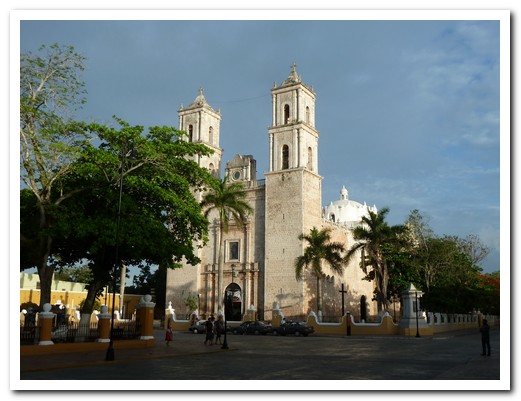
The Cathedral, built 1706 to replace the 16 th century one, on the main plaza at Valladolid
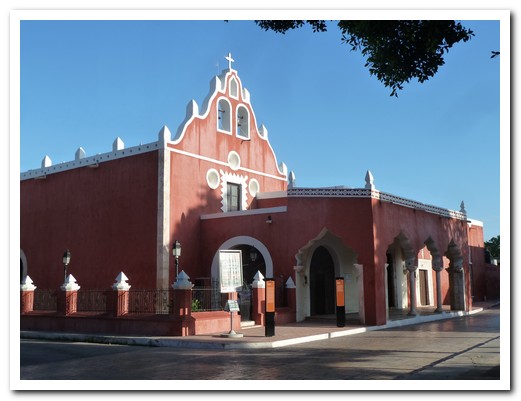
Note the mudejár style (Spanish Muslim) on this church

Calle de Los Frailes (Street of the Friars) led monks from the city centre to their Monastery
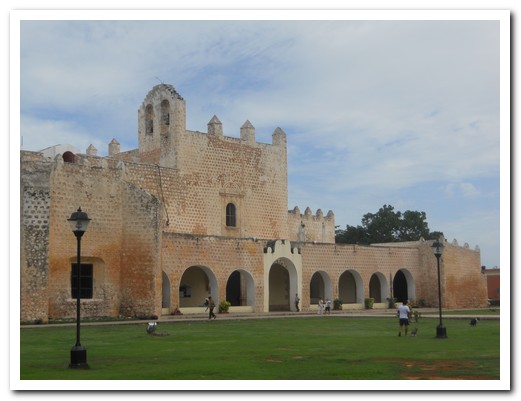
450 year old Monastery ...
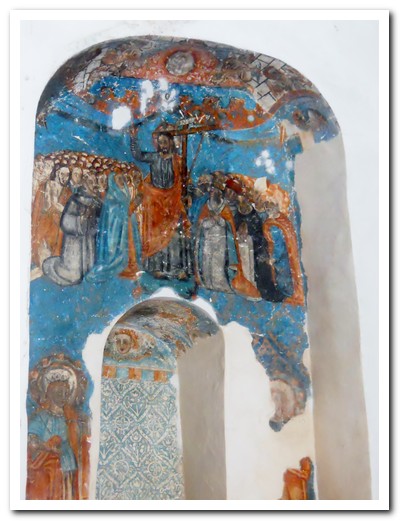
... still contains some original frescos
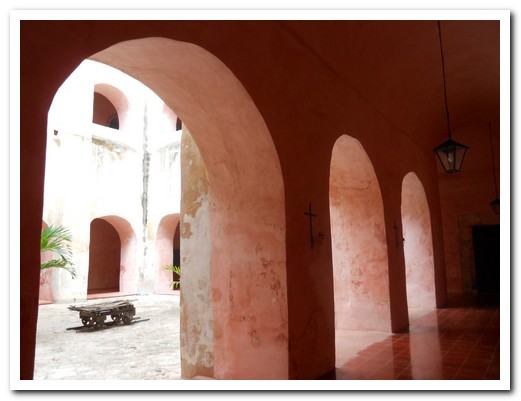
Inside the Monastery
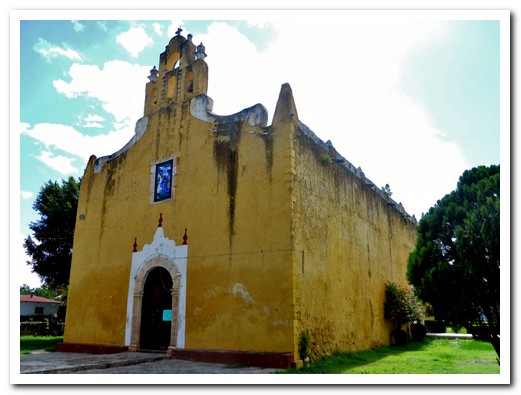
This 16th century church was for the Indians, all services in the Mayan language
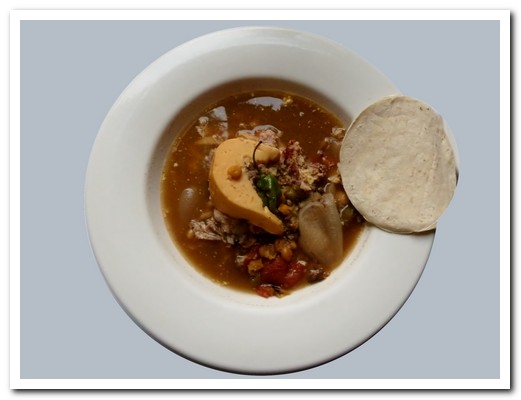
Valladolid stuffed cheese, with turkey, pork, olives, dried fruits and spices

Again the mudejár influence on this church´s bell tower
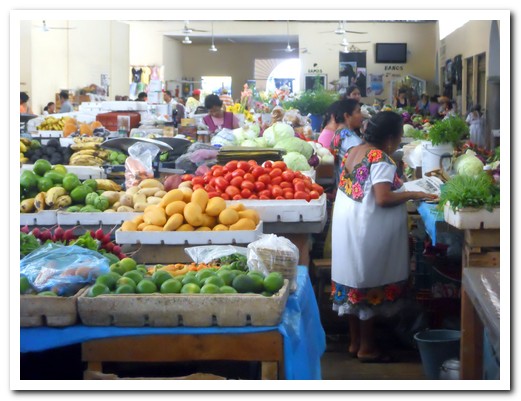
The Valladolid market

Typical women´s dresses
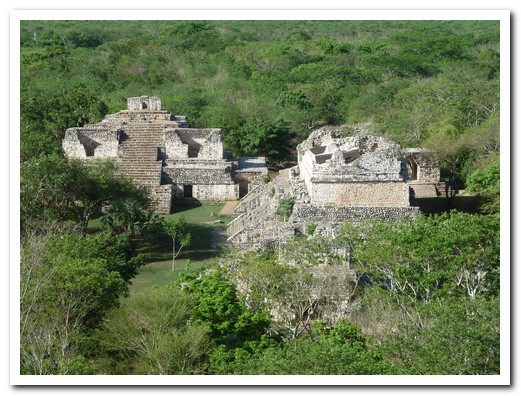
Part of the ruins of Ek Balam

More Ek Balam ruins

Carved figure on the Acropolis
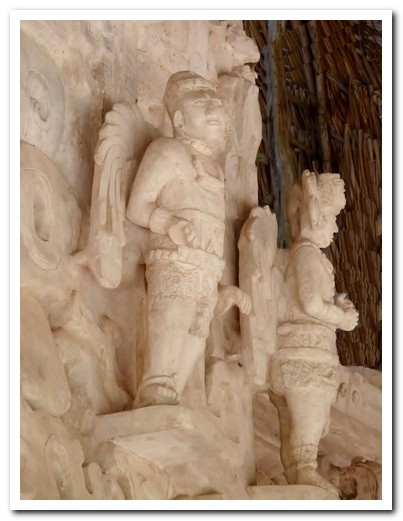
Mayan Angles (?)
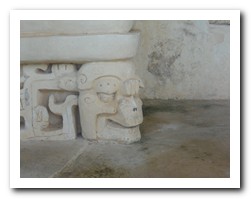

| Details of head masks at Ek-Balam |

Mayan lady sleeping on the bus
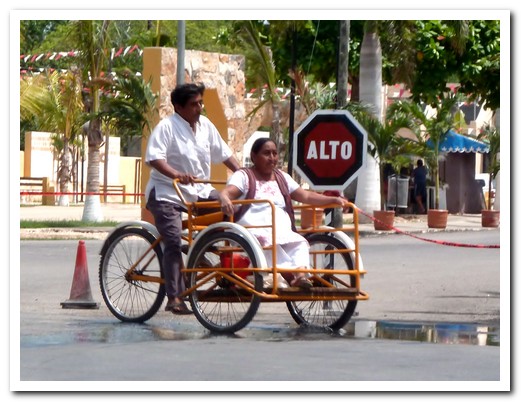
Bici taxi
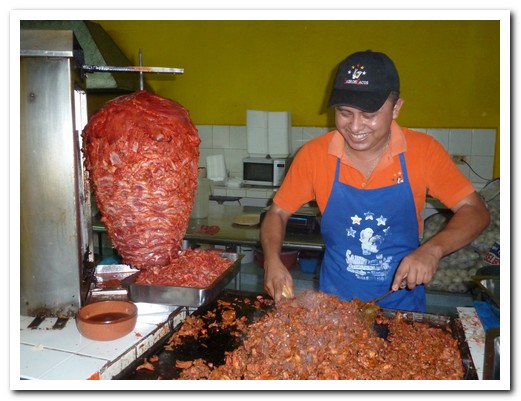
Take slow cooked pork ...
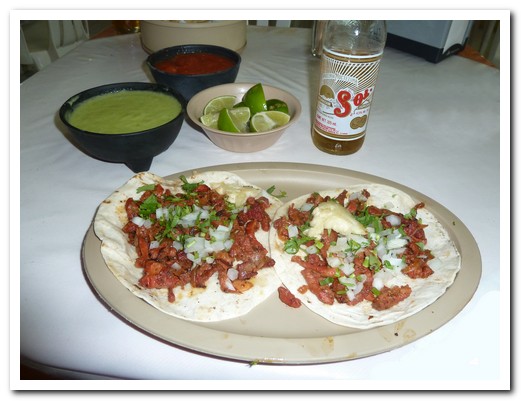
... put it on a taco with pineapple, and you have taco al pastor
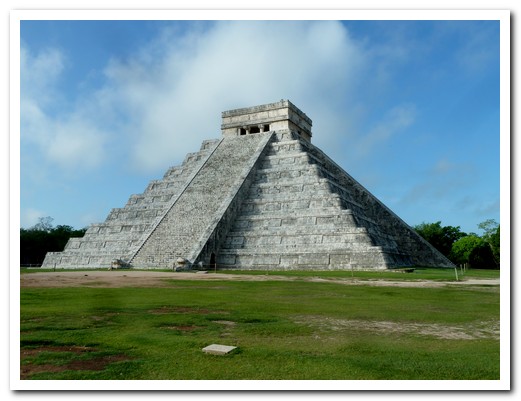
Central pyramid of Chichén Itzá
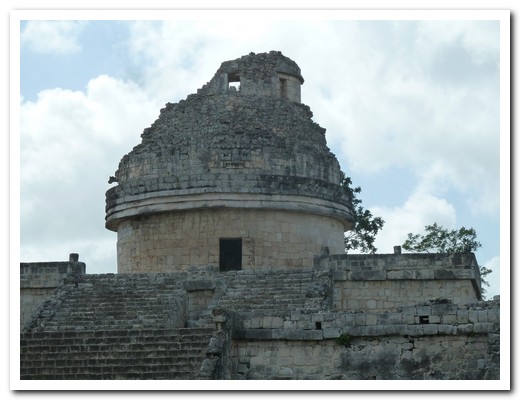
The Observatory - windows line up with certain stars
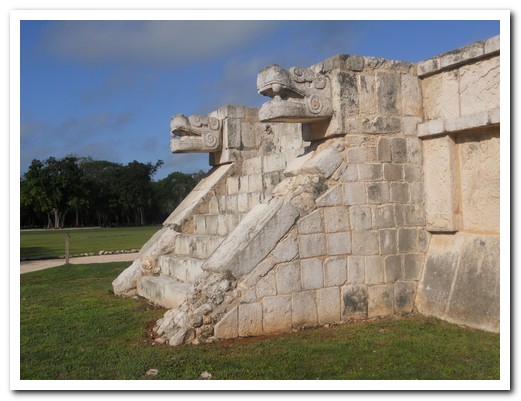
Platform of the Eagles and Jaguars (Maya/Tolmec)
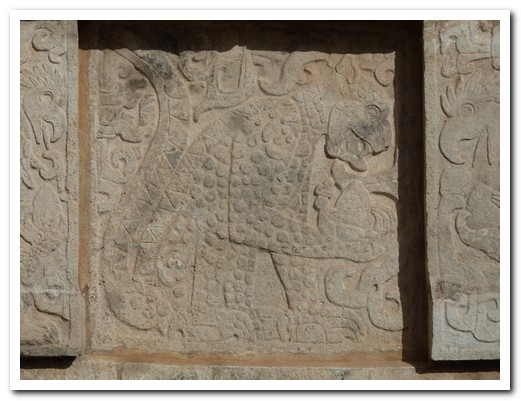
Jaguar eating a human heart

Platforms of skulls had real human skulls of the sacrificed on the platform

Plaza of the thousand columns
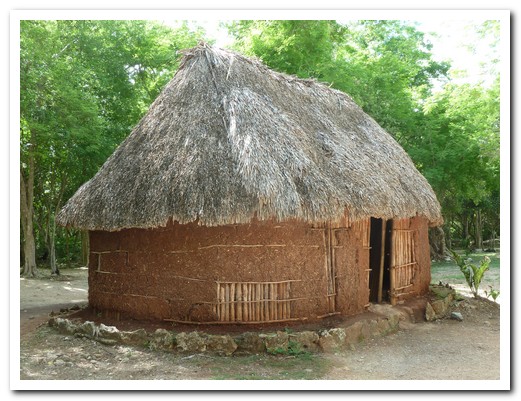
Mayan hut
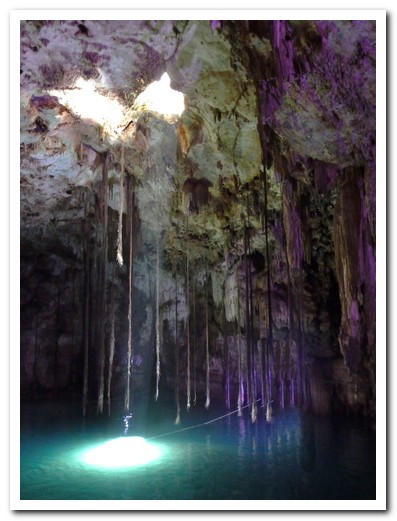
Cenote Xkekén - tree roots seeking the water

Pam cooling off in the cenote

The 1642 Iglesia Santo Domingo at Uyama, made from stones from Mayan pyramids
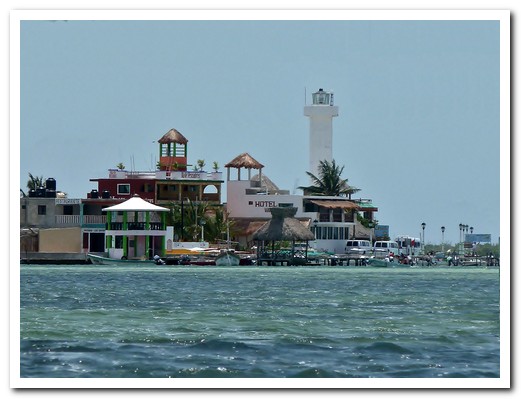
Rio Largatos
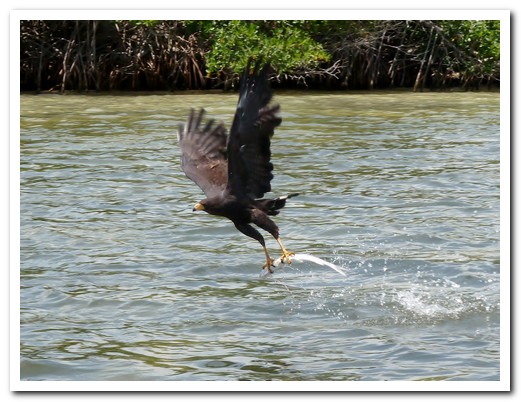
Black Hawk catching a fish
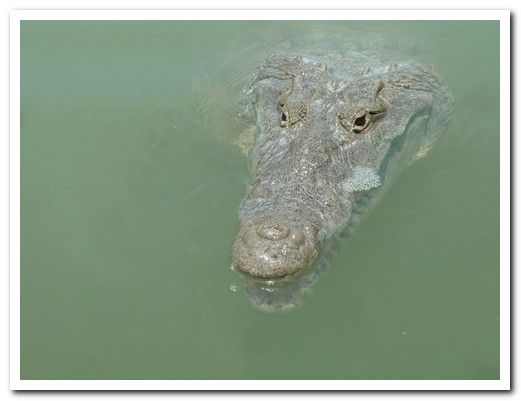
A crocodile came right up to our boat

Spoonbill
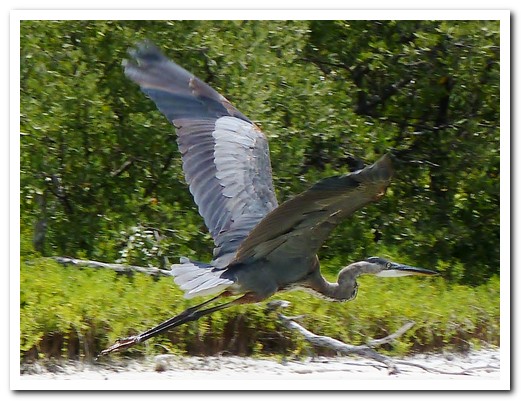
Grey Heron in flight
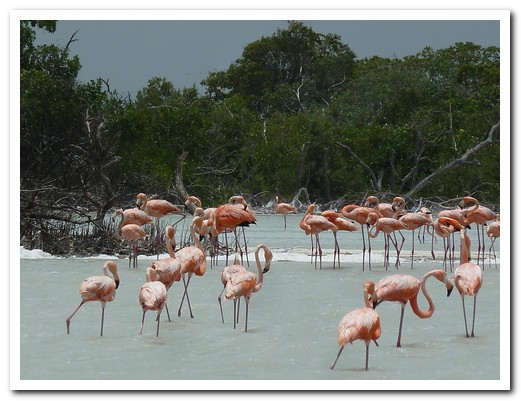
Flamingos feeding
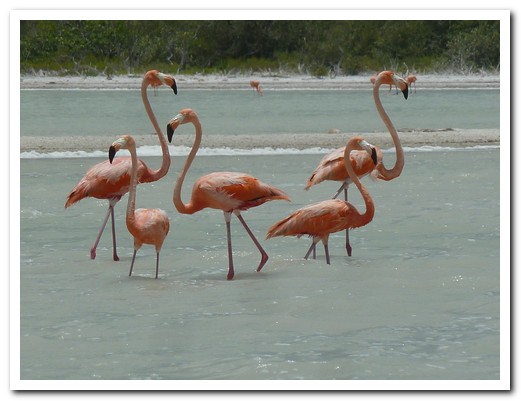
Flamingos
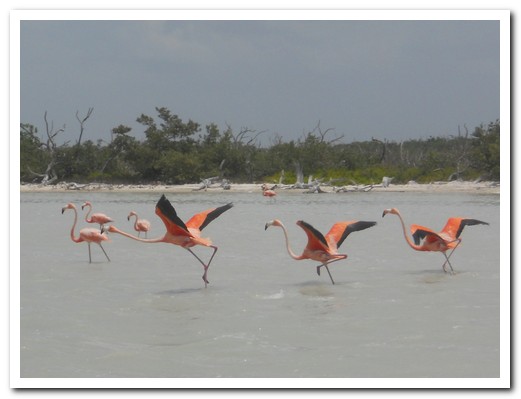
Taking off
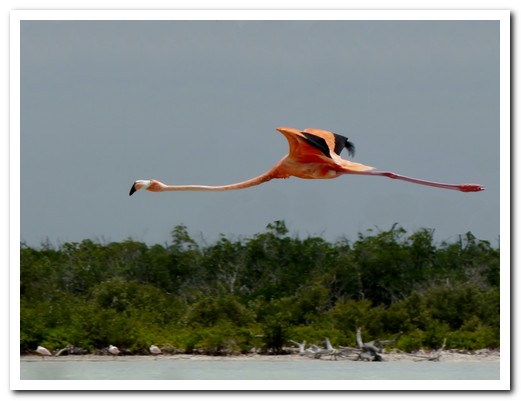
Airborne